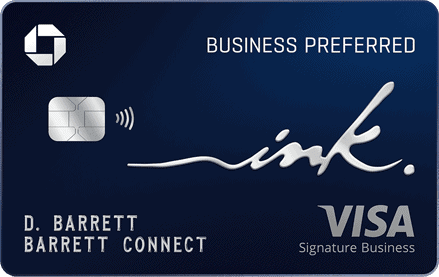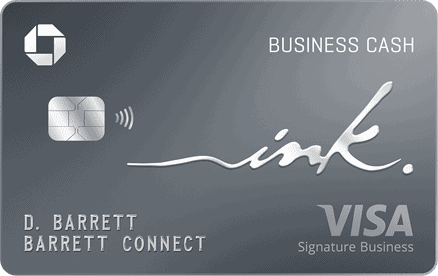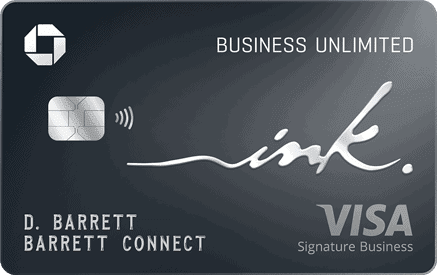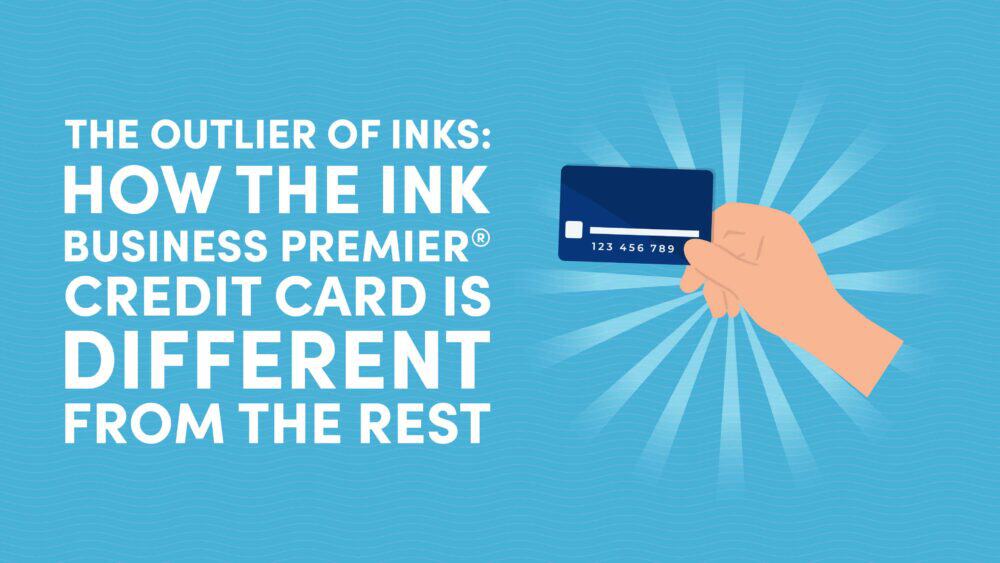
10xTravel is part of an affiliate sales network and receives compensation for sending traffic to partner sites, such as CreditCards.com. This compensation may impact how and where links appear on this site. This site does not include all financial companies or all available financial offers. Terms apply to American Express benefits and offers. Enrollment may be required for select American Express benefits and offers. Visit americanexpress.com to learn more. All values of Membership Rewards are assigned based on the assumption, experience and opinions of the 10xTravel team and represent an estimate and not an actual value of points. Estimated value is not a fixed value and may not be the typical value enjoyed by card members.
Note: Some of the offers mentioned below may have changed or may no longer be available. The content on this page is accurate as of the posting date; however, some of our partner offers may have expired. You can view current offers here.
One important aspect of running a small business that’s often overlooked is finding the right business credit card. Certain business credit cards earn valuable rewards, which can amount to some serious savings when earned on thousands of dollars of business expenses.
Many business credit cards also come with special perks, such as travel insurance, extended warranties and much more. So, if you don’t have a business credit card or your current business credit card isn’t earning rewards, then it’s time to consider signing up for a new business credit card.
If you’re looking for a business credit card with a low or $0 annual fee, then two of the best options on the market today are the Ink Business Cash® Credit Card and the Ink Business Preferred® Credit Card, both of which are from Chase.
These two cards are different in quite a few ways. However, one of the main things that separate these two business credit cards is that the Ink Business Cash is a cashback card whereas the Ink Business Preferred is a rewards card, meaning it earns Chase Ultimate Rewards points.
Another major difference is that the Ink Business Preferred Card charges an annual fee of $95 whereas the Ink Business Cash Card doesn’t charge any annual fee.
So, in deciding between these two cards, you should definitely consider each card’s annual fee, rewards earning rates and the perks that we’ll mention later in this article. By the end, you should be able to determine whether the Ink Business Cash or the Ink Business Preferred is the better credit card for your small business.
Chase Ink Business Preferred® Credit Card
90,000
bonus points
after you spend $8,000 on purchases in the first 3 months after account opening.
Annual Fee: $95
Chase Ink Business Cash® Credit Card
Earn $350
bonus cash back when you spend $3,000 on purchases
in the first three months and additional $400 when you spend $6,000 on purchases in the first six months after account opening
Getting to Know the Contenders
Before we take a deep dive into these two cards, let’s briefly look at the aspects of each car at a glance. The table below includes the most important features of the Ink Business Preferred® Credit Card and the Ink Business Cash® Credit Card.
| Ink Business Cash | Ink Business Preferred | |
|---|---|---|
| Annual fee | $0 | $95 |
| Spending bonuses | • 5% cash back on the first $25,000 in combined spending per cardmember year at office supply stores and on internet, phone and cable services • 2% cash back on the first $25,000 in combined spending per cardmember year at gas stations and restaurants • 1% cash back on all other purchases | • 3X points on the first $150,000 in combined spending per cardmember year on travel, shipping purchases, advertising purchases made with social media sites and search engines, and on internet, cable and phone services • 1X point on all other purchases |
| Employee cards | No additional cost | No additional cost |
| Other notable benefits | • 10% bonus of all eligible cash back in your first year (only if you also have a Chase business checking account) • Auto rental collision damage waiver up to the actual cash value of the vehicle • Purchase protection for 120 days up to $10,000 per claim and up to $50,000 per account • Extended warranty of one additional year on top of the manufacturer’s warranty (only manufacturer’s warranty is three years or less) | • Points are worth more when you redeem for travel through Chase TravelSM. • Trip cancellation/interruption insurance up to $5,000 per person and up to $10,000 per trip • Trip delay insurance up to $500 per person • Auto rental collision damage waiver up to the actual cash value of the vehicle • Cell phone protection up to $1,000 per claim (maximum of three claims per 12-month period) • Purchase protection for 120 days up to $10,000 per claim and up to $50,000 per account • Extended warranty of one additional year on top of the manufacturer’s warranty (only manufacturer’s warranty is three years or less) |
| Foreign transaction fees | 3% | None |
As you can see, the rewards offered by the Ink Business Cash are in the form of cash back. This means that, if you earn 1% cash back on $1,000 in spending, for instance, you’ll receive $10 in cash back. This cash back can either be redeemed as a statement credit toward your card’s balance or as an account deposit to the bank account of your choice.
On the other hand, the Ink Business Card’s rewards are in the form of Chase Ultimate Rewards points. These points can be redeemed for cash back at a value of 1 cent per point. You can also redeem Chase points directly for merchandise, flights, rental cars, hotels, dining experiences and more. On top of that, you can transfer Chase points to 14 loyalty programs, including three hotel loyalty programs and 11 frequent-flyer programs.
Often, transferring Chase points to partners means you can get considerably more than 1 cent per point in value. So, while cashback rewards are always worth 1 cent apiece, Chase points can be worth much more than 1 cent each if you’re willing to utilize transfer partners.
You’ll also notice several other differences and similarities between these two cards’ benefits. All of these will be explained in later sections of this article.
Head-to-Head: Chase Ink Business Cash vs. Chase Ink Business Preferred
Now that you’ve seen a basic overview of both of these business credit cards, let’s look more in depth at the different aspects of these cards and decide which card has the advantage in each category.
Earning Potential: Which Card Offers the Best Rewards?
In comparing the spending bonuses offered by both the Ink Business Cash and the Ink Business Preferred, it’s difficult to say which of these cards has the advantage.
Both cards have fairly similar structures, offering elevated spending bonuses up to a certain spending cap on select business categories and either 1X point or 1% cash back on all other spending. However, there are some nuances that can determine which of these cards is better for your business.
The Ink Business Cash offers 5% cash back on spending at office supply stores and internet, phone and cable services up to $25,000 per anniversary year. So, if your business spends around $25,000 annually in those categories, meaning you can take full advantage of this bonus, then the Ink Business Cash is probably a good business credit card for you. This card also offers 2% cash back at gas stations and restaurants up to $25,000 per anniversary year.

By comparison, the Ink Business Preferred offers 3X on up to $150,000 in combined spending per anniversary year on shipping, advertising with social media sites and search engines, internet, cable and phone services, and travel. So, if you tend to spend the majority of your business expenses on travel, then the Ink Business Preferred is probably the better option for you (since the Ink Business Cash doesn’t offer elevated spending bonuses for travel spending).
As you can see, in regards to spending bonuses, whether the Ink Business Cash or the Ink Business Preferred has the advantage really comes down to your businesses specific expenses. If your main expense category is office supply stores, gas stations or restaurants, then you’ll probably want to go with the Ink Business Cash. If your main expense category is shipping, online advertising or travel, then you’re probably better off with the Ink Business Preferred.
It’s also worth noting that, while the Ink Business Cash is technically a cash back card, it earns Ultimate Rewards points. These points, however, can only be redeemed as cash back (at a rate of 1 cent per point) unless you also have the Ink Business Preferred® Credit Card, Chase Sapphire Preferred® Card or Chase Sapphire Reserve®. If you have any of these three cards, then the Ultimate Rewards points that you earn with your Ink Business Cash can be transferred to Chase’s full list of transfer partners.
We recommend looking at your business expenses from the previous year and calculating how many points or how much cash back you’d earn with each card. Then, consider how you’d redeem your Chase points and adjust their value accordingly if you plan on redeeming them for travel.
Welcome Aboard: Comparing Welcome Bonuses and Their Value
Both of these Chase-issued business credit cards offer a welcome bonus for new cardmembers who spend a certain amount of money on their card in a certain period of time after account opening. These offers are subject to change often, so make sure you always check the latest welcome offer before you open a new credit card.
Here’s the most current welcome offer for the Chase Ink Business Cash:
Chase Ink Business Cash® Credit Card
Earn $350
bonus cash back when you spend $3,000 on purchases
in the first three months and additional $400 when you spend $6,000 on purchases in the first six months after account opening
Here’s the most current welcome offer for the Chase Ink Business Preferred:
Chase Ink Business Preferred® Credit Card
90,000
bonus points
after you spend $8,000 on purchases in the first 3 months after account opening.
Annual Fee: $95
Of course, the welcome bonus for the Ink Business Cash is in the form of cash back whereas the Ink Business Preferred’s welcome bonus is in the form of Ultimate Rewards points. Once again, you should factor this in when calculating the value of each bonus.
Regardless of which of these cards you decide to open, you should make absolutely sure that you’re able to earn the welcome bonus from your new card. These offers are a great way to quickly rack up hundreds of dollars worth of rewards.
Additional Benefits: Travel and Purchase Protections and More
Neither of these cards offers impressive additional benefits compared to other business credit cards out there with higher annual fees. However, it’s difficult to find good benefits on credit cards with low or $0 annual fees. Still, some perks of these cards are worth knowing.
The Ink Business Cash offers a first-year bonus equal to 10% of the cash back that you earned during your first year as a cardmember. So, for instance, if you earned $2,000 cash back in your first year, you’d receive an additional $200. However, to receive this bonus, you must also have a Chase business checking account. Even if you don’t have one of these checking accounts, we recommend opening one to get this bonus. You can always close the account in the future.
The Ink Business Cash also includes auto rental collision insurance on business rentals (up to the value of the vehicle), purchase protection (up to $10,000 per claim and $50,000 per account) and extended warranty (of one additional year as long as the manufacturer’s warranty is three years or less).

The Ink Business Preferred’s main perk is that points are worth more when you redeem for travel through Chase TravelSM.
. For example, if you were to purchase a flight through the portal that cost $1,000, you’d need to redeem 100,000 Chase points without the Ink Business Preferred (or the Chase Sapphire Preferred® Card, which offers the same perk). However, with the Ink Business Preferred, you’d need to redeem 80,000 points for the same flight.
The Ink Business Preferred also offers several other perks, including trip cancellation/interruption insurance (up to $5,000 per person and $10,000 per claim), trip delay reimbursement (up to $500 per person), auto rental collision insurance on business rentals (up to the value of the vehicle), purchase protection (up to $10,000 per claim and $50,000 per account), extended warranty (of one additional year as long as the manufacturer’s warranty is three years or less), and cell phone insurance (up to $1,000 per claim with a $100 deductible).
As you may have noticed, the Ink Business Preferred offers trip cancellation/interruption insurance, trip delay reimbursement and cell phone protection whereas the Ink Business Cash does not. These perks could potentially save you thousands of dollars in certain situations.
All in all, while the one-time cashback bonus offered by the Ink Business Cash is a nice perk, the Ink Business Preferred’s point value boost through Chase Travel℠ is a superior benefit because it can be used year after year for big savings. Because of this and the Ink Business Preferred’s better travel protections and cell phone protection, we’d say that the Ink Business Preferred definitely has the advantage when it comes to benefits.
The Annual Fee Factor: Is It Worth the Cost?
Another major factor to consider is the fact that the Ink Business Cash doesn’t charge an annual fee while the Ink Business Preferred charges an annual fee of $95. Compared to many other business credit cards, $95 is a fairly manageable annual fee. However, for some businesses, getting charged an extra $95 at the start of each cardmember year may be an issue.
Even if you can afford to pay $95 every year, you may be wondering if it’s worth it to do so or if it’s better to just go with the $0 annual fee Ink Business Cash. To find the answer to this question, you’ll need to calculate the annual value that each of these cards will provide you and then subtract each card’s annual fee.
For instance, let’s say that you expect to receive about $400 in value from the Ink Business Preferred Card’s spending bonuses per year and another $200 in value from this card’s benefits. Thus, the Ink Business Preferred Card would provide a gross value of $600 annually. Once you subtract the $95 annual fee, you see that this card offers a net value of about $505 per year.
You can do the same kind of calculation for the Ink Business Cash. However, you won’t have to subtract an annual fee since this card doesn’t charge one. Once you compare the annual value provided by each of these cards, you should be able to decide whether it’s worth paying the $95 annual fee for the Ink Business Preferred or if you’re better off with the $0 annual fee Ink Business Cash.

Transfer Partners: Maximizing Value
As mentioned above, one of the major advantages of the Ink Business Preferred is that it earns Chase Ultimate Rewards points instead of cash back. These points can be redeemed in a wide variety of ways. However, if you want to maximize the value of your Chase points, the best way to do so is by transferring them to one of Chase’s partner programs. Here is the current list of Chase’s transfer partners:
| Aer Lingus AerClub | JetBlue TrueBlue |
| Air Canada Aeroplan | Marriott Bonvoy |
| Air France-KLM Flying Blue | Singapore Airlines KrisFlyer |
| British Airways Executive Club | Southwest Airlines Rapid Rewards |
| Emirates Skywards | United MileagePlus |
| Iberia Plus | Virgin Atlantic Flying Club |
| IHG One Rewards | World of Hyatt |
All of these partners offer a 1:1 transfer ratio. So, if you transfer 10,000 Chase points to any of the partners listed above, you’ll receive 10,000 points or miles in that program’s own currency.
By transferring Chase points to certain travel loyalty programs, it’s possible to find redemptions options that offer considerably more than 1 cent per point in value. To illustrate this, let’s look at a potential redemption option through the World of Hyatt program, one of Chase’s best transfer partners for maximizing value.
We found a room at the Hyatt Regency Grand Reserve Puerto Rico for 23,000 Hyatt points per night in a king bed room.

If you were to book the exact same room on the same dates with cash, it would cost you $508 at the members advance purchase rate.

Thus, this redemption would give you a value of about 2.2 cents per point. It’s often possible to find even more value for certain redemptions through the World of Hyatt program and other Chase transfer partners.
So, whereas you could redeem your Chase points through the Chase Travel℠ portal and get 1 cent per point (or 1.25 cents per point if you hold the Ink Business Preferred Card), you can also transfer points to partner loyalty programs and significantly increase the purchasing power of those points.
By comparison, each point earned with a cashback card will always be worth exactly 1 cent. So, when deciding between the Ink Business Cash and the Ink Business Preferred, it’s important to keep in mind the potential value of Chase points if you’re willing to use them through transfer partners.
Choosing Your Ideal Business Credit Card
In choosing the perfect business credit card for your business organization, there are many things to consider. You want to be conscious of the annual fee that each card charges, welcome offers, spending bonuses, benefits and other factors, such as APR and foreign transaction fees. In general, when comparing credit cards, you’ll need to calculate the value (using all of the aforementioned factors) that each card will provide you and use that to make your decision.
When it comes to comparing the Ink Business Cash to the Ink Business Preferred, calculate how many points you stand to earn from each card’s welcome offer and spending bonuses. Then, for the Ink Business Preferred, adjust that value to account for the fact that Chase points can be worth more than 1 cent apiece when redeemed in a certain way.
After that, estimate the annual dollar value that you expect to receive from each card’s benefits. And, finally, subtract out each card’s annual fee. Since the Ink Business Cash doesn’t charge a membership fee, this step isn’t necessary for this card.
While these calculations will most likely give you an estimate rather than an exact value, you’ll definitely get a better perspective on which of these cards is better for your particular business.
Of course, there’s also the option of signing up for both of these Chase business credit cards, and doing so might be a good idea. As mentioned above, if you have the Ink Business Preferred Card, then any cash back earned with the Ink Business Cash Card (in the form of Ultimate Rewards points) can be transferred to Chase’s full list of transfer partners. Plus, the spending bonuses of these two cards actually complement each other quite well.
Finally, it’s also worth mentioning that the Ink Business Cash and the Ink Business Preferred are far from the only business credit card available in this price range. If you’re looking for business credit cards with annual fees under $100, then you may want to consider the Capital One Spark Miles for Business Card, which has a $0 annual fee for the first year and then a $95 annual fee after that.
If you’re interested in earning hotel points directly, then you may be interested in the Marriott Bonvoy Business® American Express® Card, which has an annual fee of $125 (see rates & fees) and offers some great spending bonuses and perks.
The Bottom Line
Finding the right business credit card for your business organization can lead to significant savings and access to great benefits. However, when determining which business credit card to go with, there are many factors to consider, such as annual fees, spending bonuses, welcome bonuses and benefits.
For those who are looking for business credit cards with annual fees under $100, the Ink Business Cash and the Ink Business Preferred are great options. However, while the Ink Business Cash is a cashback card, the Ink Business Preferred earns Chase Ultimate Rewards points, which can be redeemed in many different ways.
If you’re willing to transfer Chase points to partner travel loyalty programs, then the Ink Business Preferred card is probably the better option for you. That’s because Chase points can be worth considerably more than 1 cent apiece when redeemed through transfer partners.
On the other hand, if you’d rather have a card with simple rewards that earns cash back directly and doesn’t charge an annual fee, then the Ink Business Cash card may be the better card for you.
New to the world of points and miles? The Chase Sapphire Preferred® Card is the best card to start with.
With a bonus of 75,000 bonus points after you spend $5,000 on purchases in the first 3 months from account opening. , 5x points on travel booked through the Chase Travel Portal and 3x points on restaurants, streaming services, and online groceries (excluding Target, Walmart, and wholesale clubs), this card truly cannot be beat for getting started!
in the first three months and additional $400 when you spend $6,000 on purchases in the first six months after account opening
after you spend $8,000 on purchases in the first 3 months after account opening.
Editors Note: Opinions expressed here are author’s alone, not those of any bank, credit card issuer, hotel, airline, or other entity. This content has not been reviewed, approved or otherwise endorsed by any of the entities included within the post.











